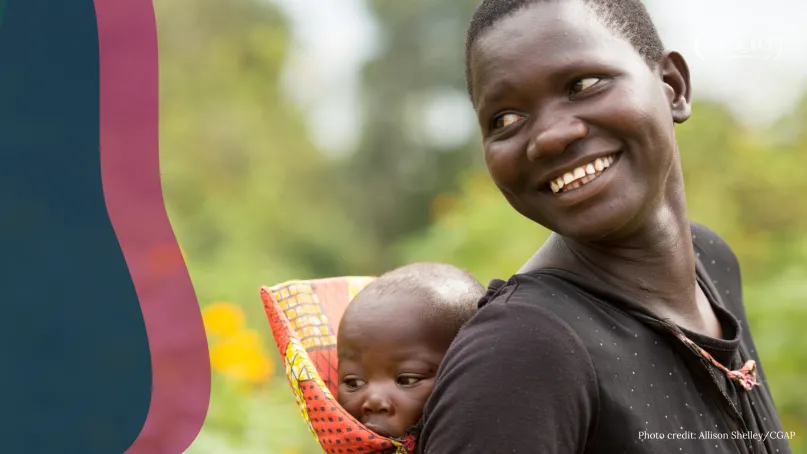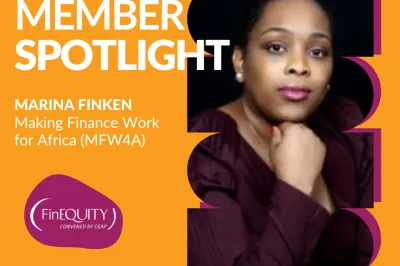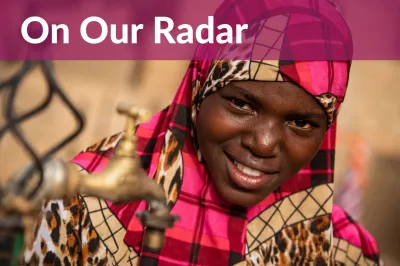Is Digital Exclusion the Missing Piece of Financial Inclusion?

The latest GSMA Mobile Gender Gap Report is a sobering, if not entirely surprising, reflection of the state of women’s digital inclusion. For the second year in a row, GSMA finds that progress in closing the gender digital divide has stalled. This, despite significant investments made with the ambition of supporting women’s equitable access to information, technology, and digital financial services — and the massive increase in focus on digital services from mobile health to communications to payments in the face of the COVID-19 pandemic.

As far as the quest to support access to the internet, over one-third of all women globally have never been on the web – a trend disproportionately driven by challenges in Sub-Saharan Africa and South Asia. In Sub-Saharan Africa, while women’s use of mobile internet has crept up slightly – from 29% to 32% over the past three years – women remain 35% less likely than men to be online at all. In South Asia, the rate of internet use among women has grown from 41% in 2020 to 46% today. But the gender gap in internet usage has actually increased over that same time period from 35% to 41%.
As the world continues to charge toward a more digitally-dependent future, women are being left behind. It may be impossible to quantify the full consequence of this gap, there is plenty of indicative data to raise alarm. At a national level, low and middle income countries (LMICs) lost an estimated $1 trillion in productivity over the past decade as a result of the gender digital divide. For women-led micro and small enterprises (MSEs), those using digital services to support their businesses were twice as resilient in the face of the pandemic as businesses that are offline. And
If we want to advance gender equality or women’s economic opportunities, we need to change the way we think about digital inclusion.
At CARE, we started to interrogate these challenges in recent years, spending time with women in a wide range of contexts, from rural refugee camps in Northern Uganda to urban centers in Peru and Vietnam. We focused on understanding their priorities and the challenges they faced. While we engaged with a wide range of women with varying levels of digital access and capability, we needed to get to know them – their ambitions, their fears, what technology they use (if any) and why, what technology (or information or solutions) they needed, what skills they wanted, and what held them back.

These conversations told a story that was unsurprisingly rich and complex, and – along with an array of accompanying research – crystalized a few consistent insights. From CARE’s perspective, in order to better support women’s financial inclusion, we must:
1. Take a step back and work to solve their number one problem, not ours.
Women’s motivations for engaging with technology – and views of what a useful solution looks like – varied dramatically. Many women we met with have deep skepticism about the safety and security of digital services generally and digital financial solutions in particular. Meanwhile, women placed tremendous value on use cases that are rarely held up as fundamental to advancing ‘development.’ Particularly among women who today lack access and are entirely digitally excluded, opportunities to ‘simply’ connect with friends or family or get news from home using voice or WhatsApp were some of the most consistent motivations we heard for getting a phone or getting online.
2. Appreciate and design for the multiplicity of barriers they face.
We heard inspiring stories of male champions taking on unpaid care and supporting their wives to build thriving businesses. We met with communities where prevailing norms valued women’s access to opportunity, including using technology. And we met with other communities where married women were prohibited from using smartphones in the name of ‘protecting them.’ As we look to support women’s participation in the digital economy, including benefiting from digital financial services, we need to double our efforts to grapple with these realities. Drawing on work done by FinEquity and others, we need to design solutions that not only offer a product or service but also work to shift the relationships that influence her ability to access or benefit from those solutions.
3. Build systems to support their progress along a long digital inclusion journey.
The women we spoke to reinforced what others have documented and what we all see in the ‘analog’ world. Whether we were meeting with women in rural savings groups we had supported to adopt a digital financial product or female entrepreneurs in busy capital cities, each of them shared with us where they had come from, where they see themselves today, and where they aspire to be in the future. And in each story was an underlying story of transition from digitally excluded to current status, to a future that envisioned using more and better tools. In this sense, digital literacy is not gained in one moment but over a lifetime.
To avoid perpetuating digital exclusion, a broader lens to both understanding challenges and advancing solutions is needed.
As my colleague Vidhya Sriram noted, “give a woman a phone and some skills training and she may still not be able to use it, she may sell it, or it may be stolen or taken. But, couple that phone and training with a process that engages her husband? Explore with them their goals and how championing his wife’s ambitions can improve their lives? Do that and she’s unstoppable!” Just as we have seen in other areas like social protection, the stories we were hearing were suggesting that unless we combined approaches to advancing digital – and alongside that, digital financial – inclusion, no amount of digital skills building, financial product development, device financing, or social norms effort, on their own, would truly enable the women we spoke with to achieve their goals. The combination was crucial.
In light of our findings, CARE launched an effort to deliver the experience women suggested they need and want. It’s called the Digital CARE Package and is an approach that aims, through partnerships, to bring together all the ingredients to overcome the access, skills, confidence, content accessibility, and social norms barriers women face when they take the first step from a basic phone (or even no phone) to an internet-enabled experience. Working through savings groups and engaging men and powerholders in their communities, CARE introduces this opportunity to women collectively. This step both helps them to work together along their own journey and offers pathways for women who may not personally become technophiles to nonetheless benefit from the opportunities technology can bring by virtue of being a member of a digitally active group. This work is admittedly nascent. But the messages CARE is getting from women we are working with in Uganda give us confidence we are on the right path:
"When they were showing us how to use smartphones, we were not confident of ourselves but by the help of our [trainer], we are now using smartphones so easily. Now we chat among ourselves and some of us are the group admins and are adding fellow VSLA members from other groups to WhatsApp chat."
"I was having a line without my own phone but now I have my own smartphone, I no longer need to borrow a phone to access my sim, I can use mobile money freely from my very own smartphone, it is good for my small business."
As we at CARE reflect on these stories, it is increasingly clear to us that perhaps the best way to change the trajectory on digital inclusion and, in the process, digital financial inclusion, is to focus a bit less on a push for women to adopt sector-specific products or solutions and a bit (or maybe a lot) more on supporting women take their first –or their next – step along their own digital journey, whether that includes a financial product today or not.



Excellent article, Christian. I especially like your comment about the error of designing for the problems we want to solve rather than the problems women are actually prioritizing. Even when we use best practices like Human Centered Design, we often frame the initial design questions so tightly around a desired solution outcome that we end up missing the most significant “ah ha” insights.
Thanks for all CARE is doing in this space. Getting digital right for women in emerging markets is one of the single most leveraged investments we can make.
Leave a comment